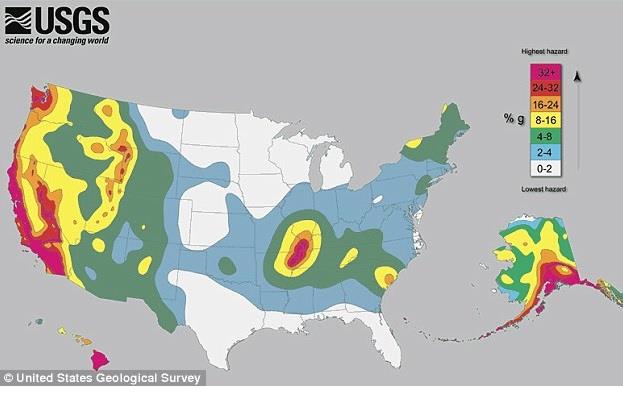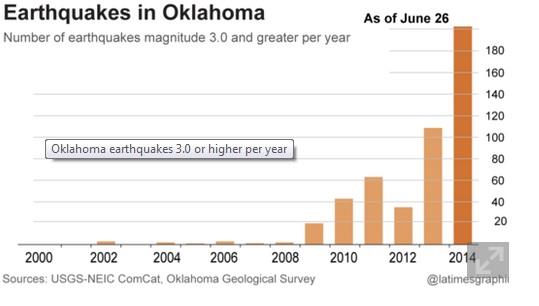America's oil and gas boom has done wonders for our energy independence and our economy, and as Pioneer Natural Resources CEO Scott Scheffield believes, U.S. oil production could nearly double from its already sky-high 2013 figures.
According to the Energy Information Administration, in 2015 the US is expected to produce an average of 9.5 million barrels/day (bpd) of oil, the highest level since 1986. Thanks to this production boom US oil imports fell from 60% of oil consumed in 2005 to just 32% in 2013.
Americans seem to agree with the positive nature of these benefits, according to a Harris poll conducted earlier in 2014:
- 87% of people think increased U.S. oil and gas production could stimulate the economy.
- 92% think it will help U.S. energy security.
- 91% believe it will help create jobs.
However, fracking, which is largely responsible for America's energy renaissance, has proven to be a highly controversial issue, with environmentalists claiming that it pollutes ground water with large numbers of little-studied chemicals and even causes earthquakes. This article examines this last claim with the aim of detailing how this risk, whether true or perceived, might affect the future of America's oil and gas boom.
Oklahoma shaking
No one would be surprised to learn that California is America's most seismically active state, however, they may be surprised to discover that coming in at No. 2 is Oklahoma. Though the state has a fault system, according to the U.S. Geological Survey, it shouldn't be experiencing as many earthquakes as it is.

In fact, in 2013, the state experienced 109 quakes larger than 3.0 on the Richter scale, about 50 times the normal level. In the first half of 2014, that number nearly doubled to 200, an annualized rate of 400 quakes.

In July, a joint study from Cornell University and the University of Colorado concluded that the increased seismic activity is likely caused by fracking and a few high-volume waste water injection wells, of which the state has about 4,500, according to Matt Skinner, a spokesman for the Oklahoma Corporation Commission, which regulates drilling in the state. In fact, according to the Oklahoma Geological Survey, 80% of the state is within nine miles of an injection well.
According to the lead author of the study (and Geophysics professor at Cornell), Katie Keranen, even a small change in pressure can cause a fault to rupture and trigger an earthquake.
Study findings
The researchers derived their conclusion by studying and modeling the effects of four specific injection wells and what is known as "the Jones swarm," a series of more than 100 magnitude three or greater quakes around Oklahoma City from 2008 through 2013.
The study's most alarming conclusion was that the high volumes of fluid pumped into the ground near the Nemaha fault (which runs through Oklahoma City) "[present] a potential hazard for the Oklahoma City metropolitan area," according to Dr. Karanen.

Source: GAO oil and gas Information on Shale Resources, Development, and Environmental and Public Health Risks Report
As this table illustrates, a typical fracked well in Oklahoma (which is home to the Barnett shale) uses nearly 5 million gallons of water. The study concludes that that high volume of fluid injection, when near a vulnerable fault, can result in increased earthquake activity.
More studies needed
According to Austin Holland, a seismologist with the Oklahoma Geological Survey, additional studies "will help improve the scientific discussion and understanding of what's occurring in Oklahoma" and learn how to prevent such quakes in the future. He points out that stopping injection wells now would rob geologists of the data they need to help alleviate the problem in the future.
Researchers in other states such as Arkansas, Texas, Ohio, and Colorado have also potentially linked fracking to increased seismic activity, and recently Ohio imposed new regulations limiting fracking near fault lines.
Not everyone is convinced of the direct causal link between earthquakes and fracking, though. For example, Oklahoma Independent Petroleum Assn. President Mike Terry has pointed out that disposal wells have been used in the state for more than 50 years and "have met and even exceeded current disposal volumes during that time." With oil and gas production occuring in 70 out of 77 Oklahoma counties, "any seismic activity within the state is likely to occur near oil and gas activity."
This brings up a good point, in that another potential explanation for increased earthquake activity (changing water table levels under vulnerable faults) might be at least partially contributing to the seismic activity, and the study is picking up a purely correlated (not causal) link.
For example, according to Bob Kirkman, a consulting geologist (formerly of the Colorado Geological Survey) "Colorado is ground zero for research on induced earthquakes caused by injection... Yet still there are hundreds of injection wells that aren't causing quakes. There must be something geologically that's going on responsible for some causing earthquakes and some not, but we don't know the answer at this time."
Additionally, Stanford geophysics professor (and advisor to the Obama Administration) Mark Zoback is skeptical of the causal link between fracking and earthquakes. "The energy released by one of these tiny microseismic events (fracking) is equivalent to the energy of a gallon of milk hitting the floor after falling off a kitchen counter. ... Needless to say, these events pose no danger to the public."
Speaking of Colorado, the state came very close to putting a referendum on this year's ballot that would allow local municipalities to ban fracking. This is similar to efforts in California, where a potential moratorium on fracking just failed for a second time (barely), and New York state, where a de facto moratorium on fracking has been in effect since 2008. Should future efforts at fracking moratoriums succeed, it could signal a regulatory peak to America's incredible oil and gas potential.
With the Obama Administration proposing new regulations regarding fracking, the earthquake factor does poses a risk to the continued growth of U.S. oil and gas production. Further studies, specifically geared toward distinguishing causation versus correlation as well as investigating how to minimize the risk of triggering quakes should they be caused by fracking, are needed given how important America's oil and gas revolution is to the world.





